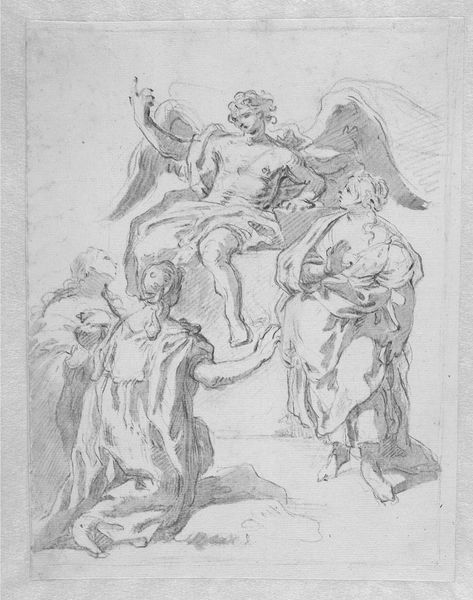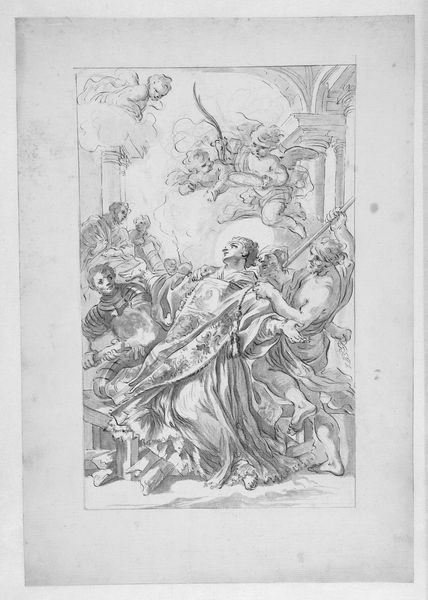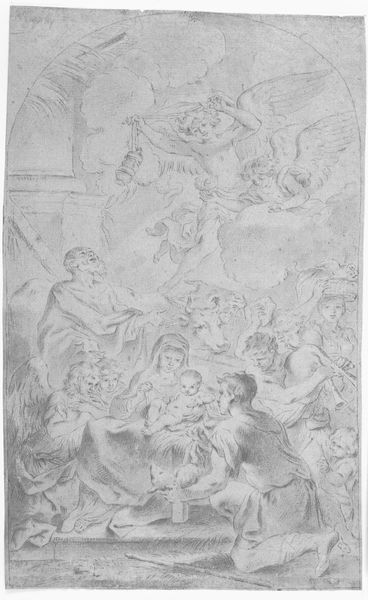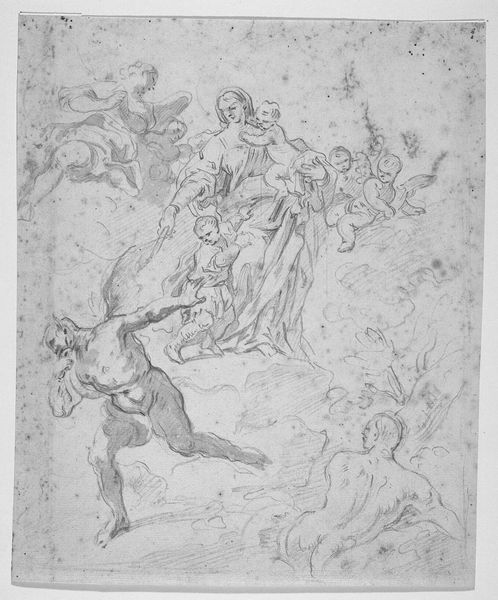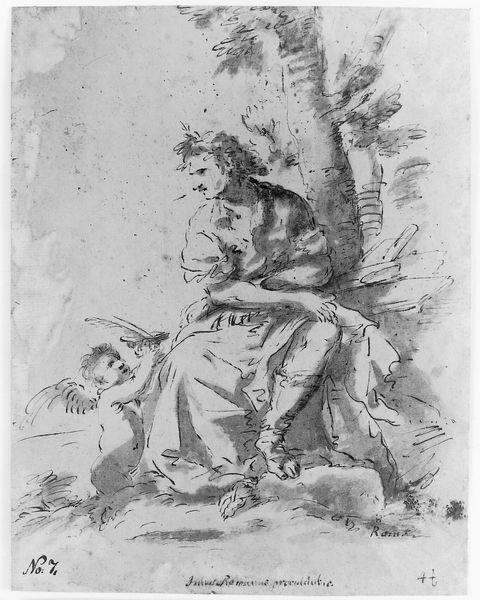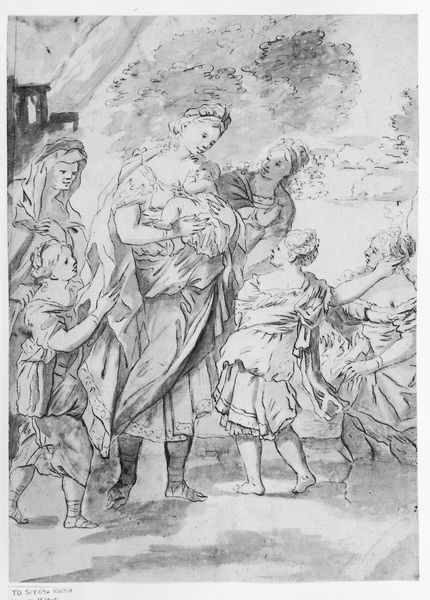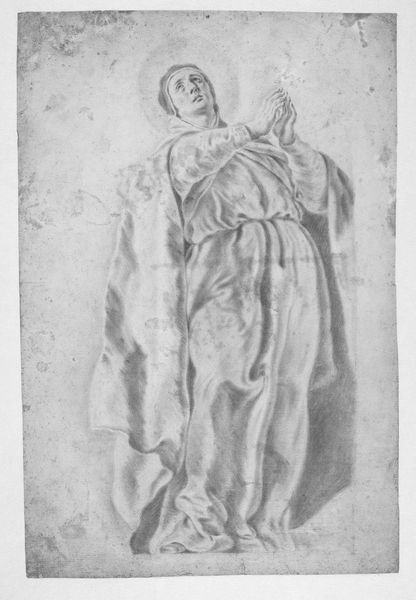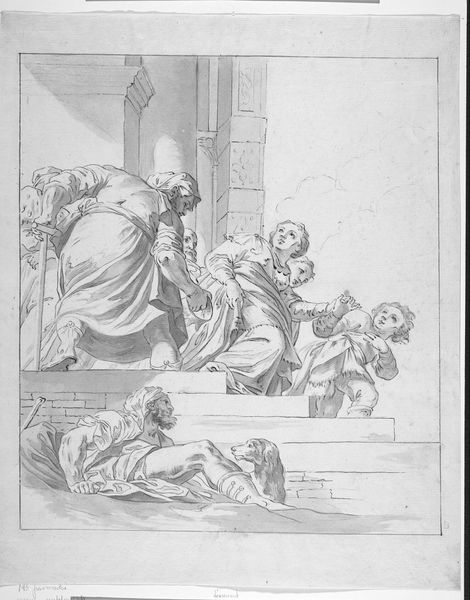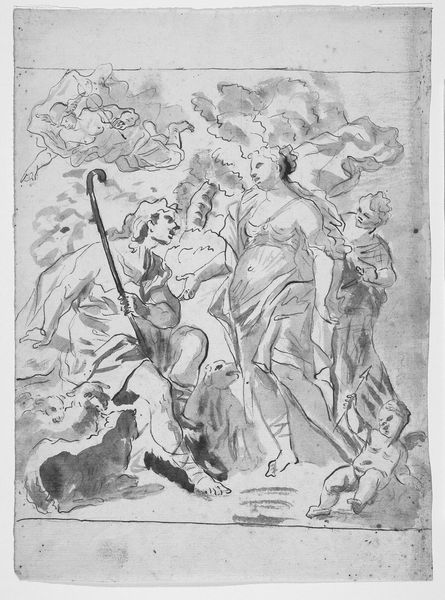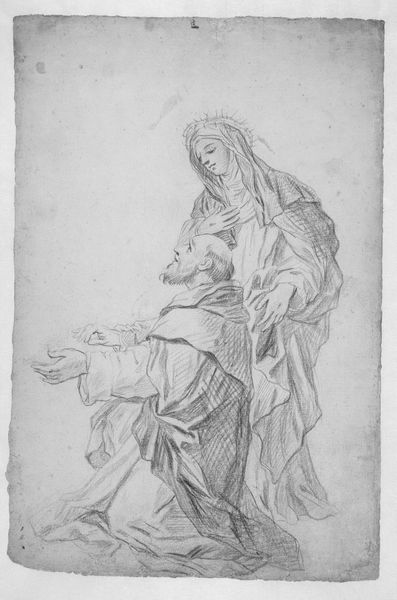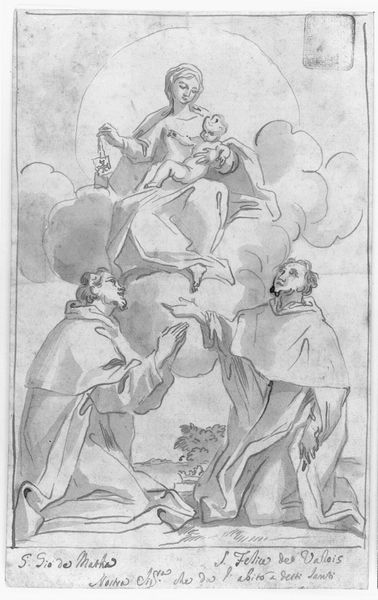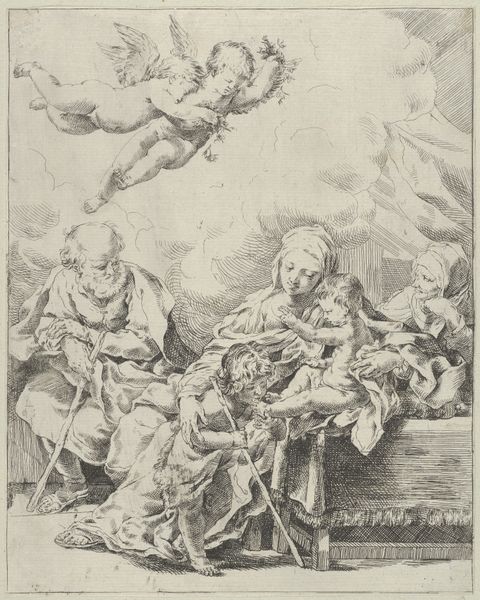
drawing, dry-media, pencil
#
pencil drawn
#
drawing
#
light pencil work
#
baroque
#
pencil sketch
#
figuration
#
dry-media
#
pencil drawing
#
pencil
#
pencil work
#
history-painting
#
pencil art
Dimensions: 430 mm (height) x 276 mm (width) (bladmaal)
Curator: Good morning. We're looking at an 18th-century drawing attributed to an anonymous artist titled "Four saints in the clouds and two flying angels," housed here at the Statens Museum for Kunst. It's a pencil sketch, seemingly preliminary. What strikes you first about it? Editor: The tentative, almost ethereal quality of the lines. It feels as though the whole scene is dissolving into light and air. You can almost feel the grit of the pencil struggling to grasp figures emerging from some cloudy vision. Curator: Precisely. The use of dry media, specifically pencil, invites us to consider the compositional structure. Note how the artist uses layering to achieve depth, the figures strategically positioned to guide the eye upward, playing with the sacred and profane in one plane. Editor: I’m interested in how the lightness speaks to its purpose, to its production, how it relates to craft at the time. Was this sort of thing done as a masterclass to reveal technical competence to potential customers? Where might this artist have fit in the workshop setting? What labor made its form possible? Curator: A relevant point. We know the Baroque embraced complexity, but this sketch shows us the artist working towards that, wrestling with form before the grand, finished artwork. I’d like to consider, for a moment, the semiotic weight of clouds within art history; how Baroque painters embraced dramatic contrast to mirror heavenly drama and emotion… Editor: Yet consider the pencil itself. Where was the graphite mined? What were the working conditions for the artist’s tools? Are we perhaps fetishizing the final ‘art’ product, without proper consideration of the historical situation? And given its incompleteness, shouldn’t we consider the artwork in relationship to labor practices involved with this and other similar pieces? Curator: A perspective worth acknowledging, as we balance considerations of the artist's intention and the work's historical place, perhaps we’ll never fully unveil it. Editor: Indeed, and perhaps by digging at its means of production we can excavate at its ideological project. A simple pencil, and a vast matrix of relationships emerge.
Comments
No comments
Be the first to comment and join the conversation on the ultimate creative platform.

